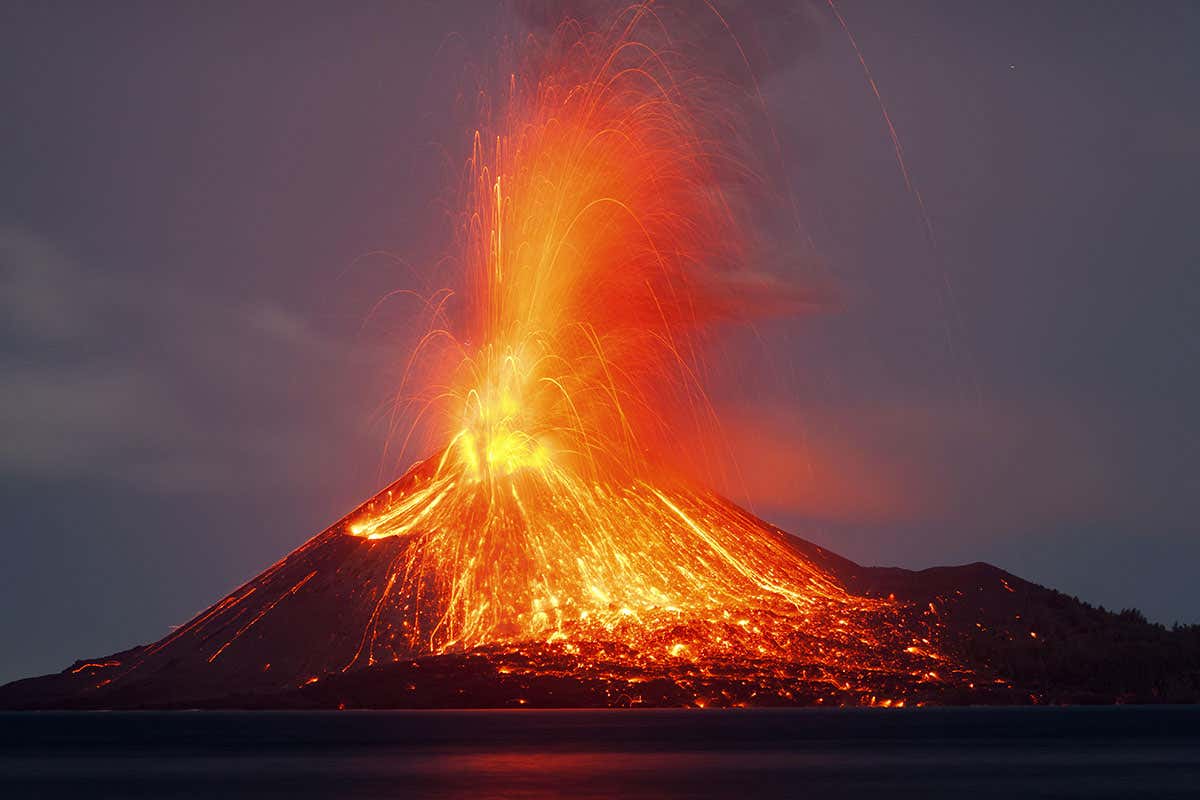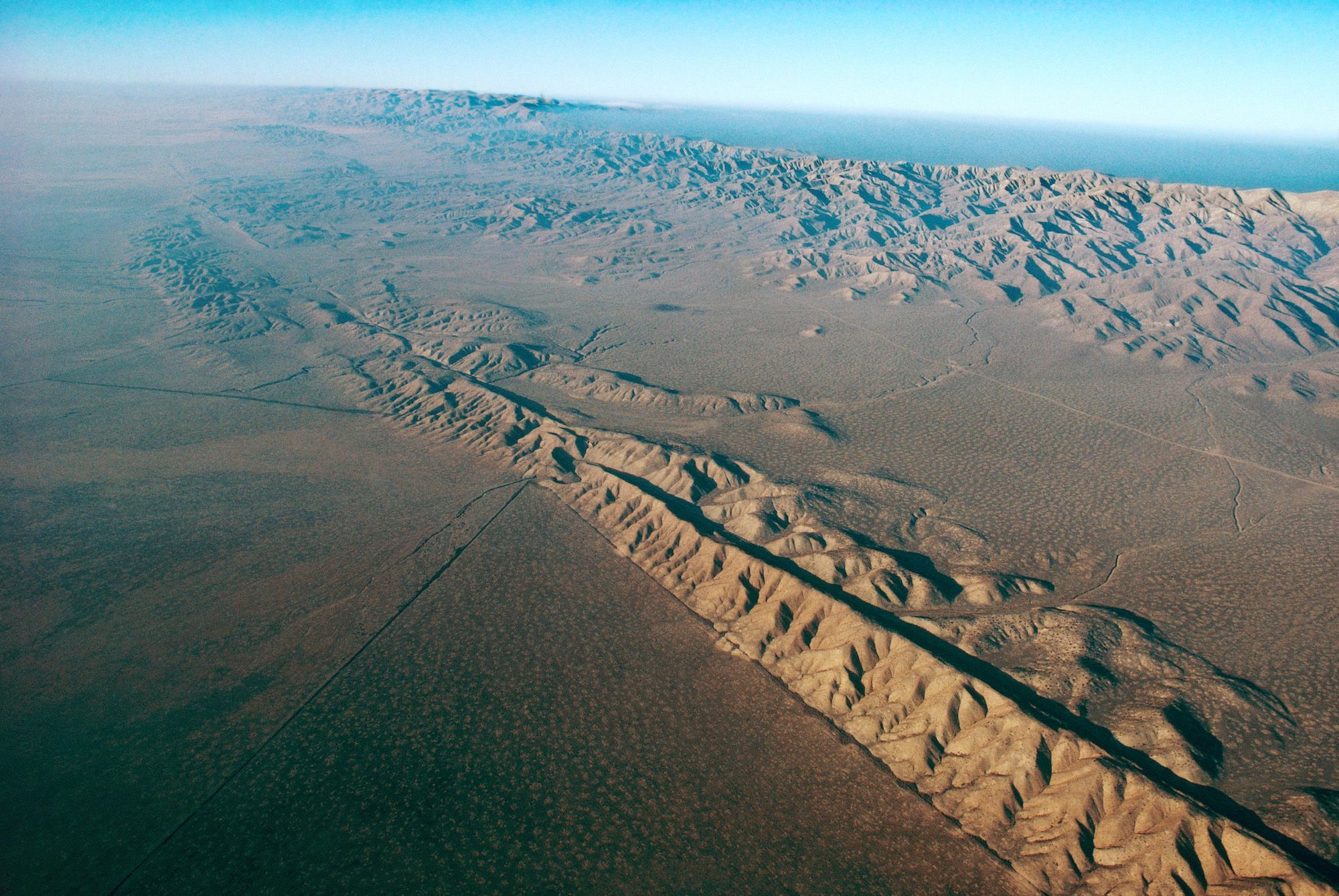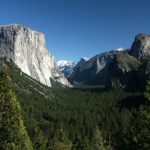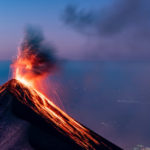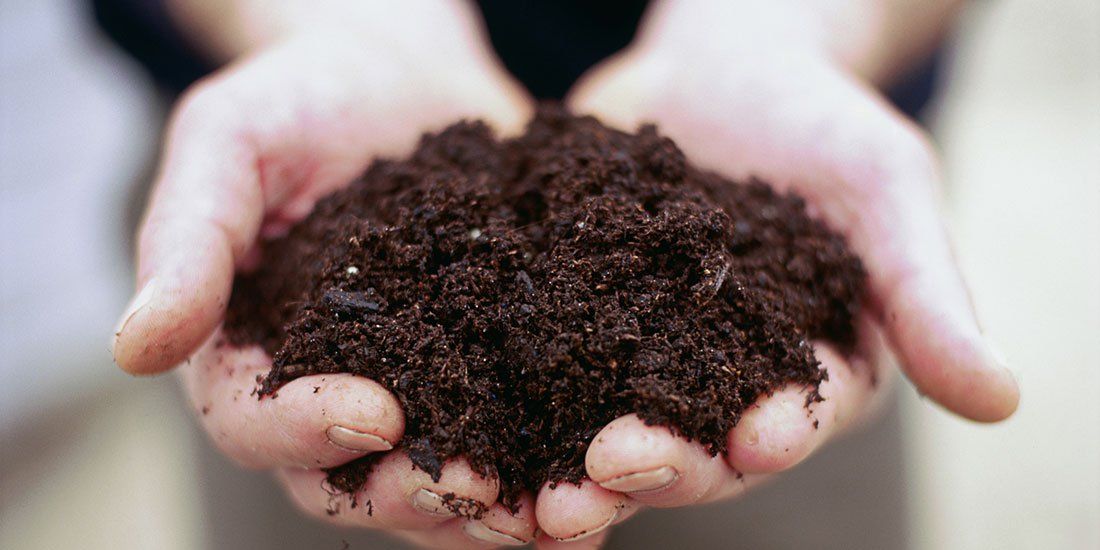In many locations the hot molten magma from deep within the Earth rises up through the crust to reach the surface. This sometimes happens in the middle of plates. When a hot spot forms in the middle of a plate, it remains constant, as the plate continues to move over it. The result is that a trail of volcanoes is left behind, with older volcanoes moving away from the hot spot, and newer ones forming over top of the hot spot.
Hawaii is a world famous volcanic hot spot
One of the most famous hot spots on Earth are the Hawaiian Islands. The oldest islands found in the Hawaiian Island chain consist of mostly dead volcanoes. These volcanoes were active millions of years ago, but the moving crust of the ocean floor has carried them away the hot spot that feed the volcanoes. The newest island is the big island, which today has two active volcanoes. These volcanoes are feed by the same hot spot that used to feed the dead volcanoes on older islands. Millions of years from now, it is likely that additional islands will form over the same hot spot, as the Earth’s crust carries the big island away from the hot spot it know sits on.
Volcanism
When hot molten magma escapes from the Earth’s core becoming cooler, and forming hard rocks, we refer to this process as volcanism. Volcanism takes place both above the surface of Earth, as well as beneath its surface. When molten lava escapes the Earth and reaches the surface geologists say that it is extrusive volcanism. When molten magma cools and hardens beneath the surface of the Earth, we say that it is intrusive volcanism. In some cases, molten magma cools and hardens deep beneath the surface of the Earth, far below the crust. When this happens, scientists call it plutonic volcanism.
Extrusive Volcanism
When volcanic activity takes place above ground, so that hot molten magma is released onto the landscape, we say that the volcanic activity is extrusive, meaning it is on the exterior, or outside of the Earth. Magma that reaches the service is known as lava.
Lava flows are extraordinarily hot, and destructive. In many cases, these lava flows are slow and continuous, as is the case with the volcano on the Hawaiian Island. Hot lava flows year after year down the volcano, creating new terrain, rarely exploding.
In other cases, volcanoes can erupt with unbelievable force and power. These types of eruptions can send lava, rock, and hot ash, known as pyroclastic material shooting outward for hundreds of square miles, in some cases, even sending up a worldwide cloud of dust and ash.
One example of such an eruption is the island of Krakatua. In 1883 this island volcano exploded in a colossal event that completely destroyed the island, leaving nothing but ocean behind. The noise from the explosion was heard as far as 1,500 miles away, and dust filled the sky worldwide, creating beautiful sunsets for months.
Terrifying Explosions Versus Calm Eruptions
What causes some volcanoes to explode in devastating and deadly eruptions, while other volcanoes calmly pour their lava across the landscape with virtually no explosions what-so-ever?
The most important factor that determines what type of eruptions that a volcano will experience is chemistry. In other words, the substances found in the magma determine how it will erupt. A volcano whose molten magma contains large amounts of a substance called silica tend to explode with great energy.
Volcanoes that contain little or no silica usually do not explode, but instead calmly release rivers of lava across the landscape. Volcanoes do not typically change their eruption type. Volcanoes that explode, will always explode, while those that release their lava in calm flows, will always do so.
Volcanic Activity
In order to be considered active, a volcano must have erupted within the last few thousand years. On the Earth today there are around 560 active volcanoes. Each week 15 – 20 of these volcanoes will erupt. Each year two or three volcanoes erupt that were previously thought to be dead.
Some volcanoes last for hundreds of thousands of years, while others are born, and die within a matter of only a few decades. While old volcanoes are constantly dying, new volcanoes are being created. One such event took place in a farmer’s field in Mexico in 1943. Within a nine year period a new volcano formed, building a large mountain, where no previous volcano existed. In 1964 a similar eruption took place in the ocean off the coast of Iceland. This eruption and subsequent eruptions have created a large island, where there was previously only ocean water.
Volcanoes And Plant Life
When volcanoes erupt, the immediate effect on plant life is destructive and deadly. As lava, heat, and ash cover the landscape, trees and other plants are burned, buried, and destroyed. Thus, it is easy to suppose that volcanoes and plants don’t mix.
This assumption could not be further from the truth. While it is true that the immediate effect of volcanoes on plant life is death, the long term effect is very positive. Magma from the Earth’s core contains a rich source of nutrients that plants need to survive. Each time a volcano erupts, it brings these nutrients with it. When volcanoes explode, spreading ash around a large area, this ash acts as a fertilizer, enriching the soil. It is no surprise that the soil near volcanoes is among the richest and most fertile on Earth.
Other Types of Volcanic Activity
Not all volcanic activity takes place in volcanoes. In fact, more lava has reached the surface of the Earth through fissures in the Earth’s crust, than through volcanoes. These fissures slowly create massive landforms spanning hundreds of thousands of square miles, without ever creating a volcano.
Volcanoes And Land Formation
Volcanoes create an almost infinite variety of landforms and terrain. However, geologists have noticed patterns when studying these different terrains, that allow them to group them into categories, based on how they are the same, and how they are different. These four landform types are called lava flows, volcanic peaks, calderas, and volcanic necks.
Lava Flows
Lava flows get their name from the manner in which the hot molten lava flows outward parallel to the surface of the Earth. The result is a large flat lava covered plain.
As additional lava flows escape from a volcano or fissure, they create layers of lava rock left behind from the many different flows.
Volcanic Peaks
A volcanic peak is what we tend to think of when we talk about volcanoes. It is a volcano that has formed a large cone shaped hill, or mountain. These cones typically have a large bowl shaped crater in the top center.
Calderas
Calderas are massive crater-like depressions that can cover many tens of square miles. These calderas form when volcanoes explode with terrible destruction, completely obliterating the original volcano, and surrounding area.
One famous example of a caldera is North America’s Crater Lake. Around 7,000 years ago a massive volcanic peak reaching 12,000 feet in elevation set in this location. A powerful eruption blasted the top 4,000 feet away, leaving a deep bowl shaped caldera. Since that time, a new dome has begun to form in the center of the caldera.
Volcanic Necks
A volcanic neck is the remnant of an old volcano. As the volcano died, the last bit of lava inside of the volcanoes opening, or neck, cooled and hardened. Over many hundreds of thousands of years the material around the neck is removed by erosion, leaving only the harder neck behind.
